John Hurrell – 21 June, 2012
There is an argument that recycling the past like this is truly avant-garde, but I don't buy it. I don't visit contemporary art galleries to see recreations of art styles my great-grandparents might have seen in a salon. I go to experience something I don't normally come across. Something of our time that takes me by surprise, a way of thinking, a notion or a sensuality that gets me curious, mentally and bodily engaged.
In this large series of paintings of flowers in vases, a show seemingly influenced by fin de siècle artists - especially tonally constrained Nabis like Felix Vallotton or Edouard Vuillard - Layla Rudneva-Mackay moves on from her earlier photographic portraits of faces covered with coloured make-up to recreate the type of Parisian post-impressionist style one might normally find in the Museé d’Orsay. Brusherly and decorative, they look odd on white modernist walls. They almost seem to be thumbing their noses at the dominant ‘Starkwhite’ purity - this clearly unintended - so cut off from a nineteenth century red-oxide walled, salon hang.
Unabashedly retro, the fifteen beautifully crafted paintings are in the two downstairs galleries, while upstairs we see eight photographs of pots, leaning boards or stacks of simple objects positioned on painted tables or in front of thinly painted walls.
There is an argument that recycling the past like this is truly avant-garde, but I don’t buy it. I don’t visit contemporary art galleries to see recreations of art styles my great-grandparents might have seen in a salon. I go to experience something I don’t normally come across. Something of our time that takes me by surprise, a way of thinking, a notion or a sensuality that gets me curious, mentally and bodily engaged. I like the new and the way it locks into passing time and my own fragile, passing, fleeting existence. I like the idea of the new - even if its manifested particulars flummox or bore me. I find change in art refreshing because I see an art life without it as no life at all.
Therefore with these paintings, I feel drawn to their charm (they are nicely put together) but mentally resist their fusty conservatism. However the C-type photographs upstairs are different. While not themselves earth shatteringly innovative (you might argue they are merely variations of the paintings) they at least can be linked to mid-twentieth century technology like the Polaroid camera. I take them more seriously, for their visual appeal rests on mechanical processes, a lack of definition in their parts, a blurriness that seems to account for the moving figure poised in space and looking across it. They might also allude to memory - the fuzziness of straining recall.
They have a gentle wit the paintings lack - by virtue of the references to painted surfaces contained within - and that softness is Richterlike. Their C-type print surface is different from the paintings with its stable sheen and avoidance of tactile relief.
Rudneva-Mackay presents an interesting show because she draws a line in the sand. I’m not stepping across and I don’t think her move is courageous - but it is good to ponder over. Meat for conversation. Mental mastication.
John Hurrell
Recent Comments
John Hurrell
Gad Peter, you are a vicious eagle-eyed swine. Linking Andrew to wine and me to walk shorts causes suppurating wounds ...
peter madden
To Wood and Hurrell you are both confused. First Hurrell, whilst as you point out PM is not a repudiation ...
John Hurrell
Peter, I think it is widely understood now that postmodernism is not a repudiation of modernism but an extension, a ...
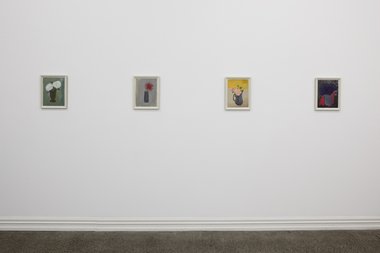
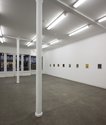
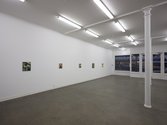
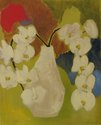

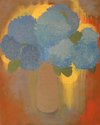


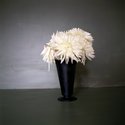
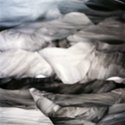
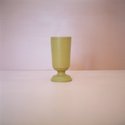
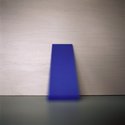
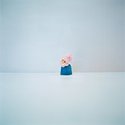
 Advertising in this column
Advertising in this column Two Rooms presents a program of residencies and projects
Two Rooms presents a program of residencies and projects



This Discussion has 7 comments.
Comment
Owen Pratt, 6:44 p.m. 27 June, 2012 #
waaaaay too decorative to be art, can't be art, mustn't be art eh? if its pretty pitchers, no it's not art. it's design, not art or just commodity, not art- not art. old hats can't be art either.
new shiny novelties please, slicker-licker. the next not art, to be soon; now. ta.
where is that line drawn in the hand? where is the future?
John Hurrell, 12:51 a.m. 30 June, 2012 #
Thank you for your articulate observations, Owen. Whatever your views on my comments (consider them good taste or prejudice) I am at least being consistent - as some of my reviews of say Jude Rae or Vincent Ward show.
peter madden, 7:24 p.m. 30 June, 2012 #
That's nailing your colours to the mast and as I expected, revealed the short comings of your mind and your ability to truly look at contemporary art. Your unfailing desire to see your Idea of the "NEW" [woe betide any form of art that doesn't make this grade] marks you out for all that read here as a Modernist and one of the most wanting. A hierarchist of the most mundane kind, one I thought had died out, with walk shorts and six o'clock swill time. Your inability to view contemporaray art without the forementioned bias is something one has come to expect from first year art history students, than some one who pretends to read contemp art [here I guffaw up my fraying sleeve]. Anybody who had ever imagined art as having an utopic quality of at least releasing the bourgeois from the prison of their prejudices need only read your reviews to see it ain't so.
John Hurrell, 1:07 a.m. 1 July, 2012 #
Peter, I think it is widely understood now that postmodernism is not a repudiation of modernism but an extension, a development from it - another variation. As for the notion that there exists today a state of genuine pluralism, devoid of hierarchy so that 'anything goes', that is plainly nonsense. Lots of art genres, deemed 'uncool' or unfashionable, are ignored by the magazines, critics and art schools - although there is no single metanarrative anymore. The discussion includes far greater diversity. Despite that, certain preferences dominate. Get real!
Andrew Paul Wood, 9:29 p.m. 30 June, 2012 #
While I agree that "art" is a house of many mansions, recycling experiments of yesteryear so precisely without any synthesis or personal expression, is at best amateur hour and at worst unalloyed kitsch. It's like slash fiction or fan fiction - an artist 100 years ago sweated blood to bring about a paradigm shift in the way we view the world through art, just so someone without a fraction of the vision can monkey around with it without any irony or context.
peter madden, 9:31 a.m. 1 July, 2012 #
To Wood and Hurrell you are both confused. First Hurrell, whilst as you point out PM is not a repudiation it is an error because you are tempting me to think that there is a linear development from M to PM. There are many instances where a PM work refutes M's Ideological agenda [say Feminism, or post-colonial etc]. I like how you try to take the argument away from your blind spot to an attack on Pluralism - typical of a Modernist thinker still blaming that hoary old chestnut. Now whilst your bent and passionate reviews are compulsive to read, they do nothing but show you as an hierarchising Modernist [Modernism can exist in an enclave - I posit your mind to be such an enclave]. That you are unable to appreciate the greater subtleties Postmodern art demands is no surprise to me or others, but I don't think the sublime arrogance of your narrative will ever allow that. Mr Wood what??? Kitsch is a rather important anti-style movement, sweating blood 100 years ago eh? Exactly how many wines?
John Hurrell, 11:16 p.m. 1 July, 2012 #
Gad Peter, you are a vicious eagle-eyed swine. Linking Andrew to wine and me to walk shorts causes suppurating wounds from which we may never recover. Pax, brother, peace: enough's enough!
Participate
Register to Participate.
Sign in
Sign in to an existing account.